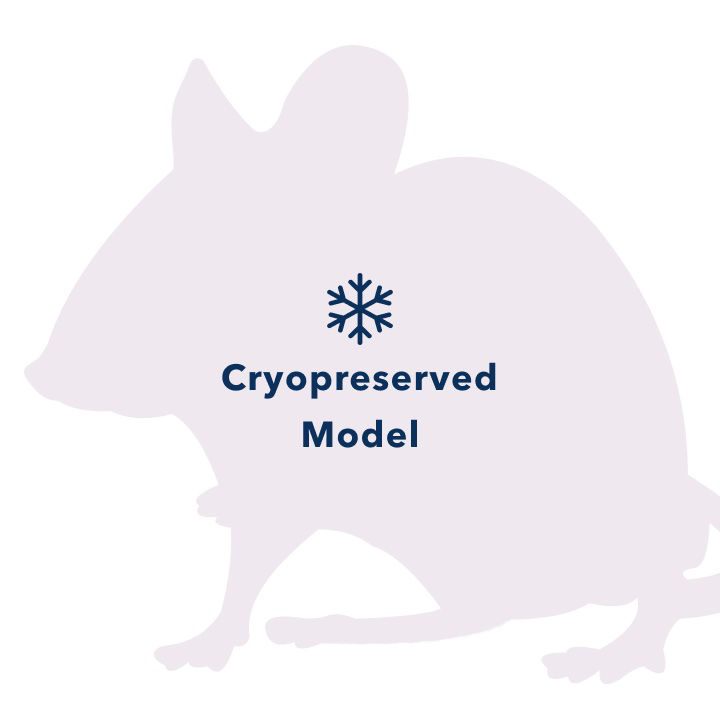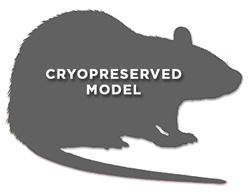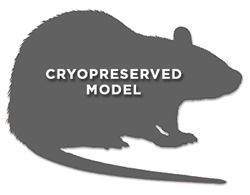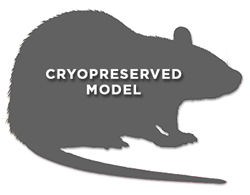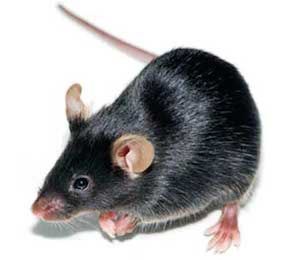| Model No. | Nomenclature | Genotype |
|---|---|---|
| 16552 | C57BL/6NTac-Gt(ROSA)26Sortm1(Pgk-Rab29)Tac | ki/wt |
Rab29 Overexpression Mouse
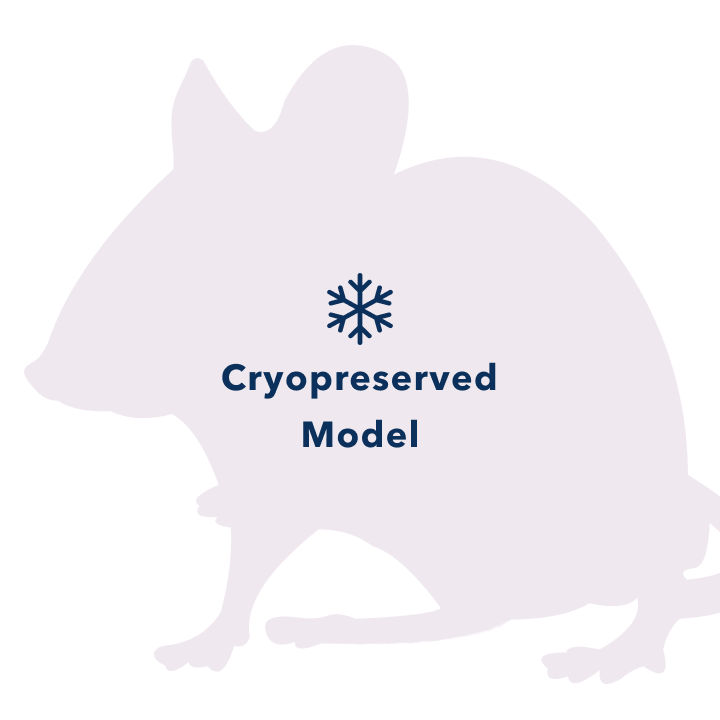
- Description
- Data
- Price & Licensing
- Overview
- Genetics
- Guides & Publications
- Applications & Therapeutic Areas
- Transit, Housing & Welfare
Overview
Model Sponsor: The Michael J. Fox Foundation
Taconic Biosciences has partnered with The Michael J. Fox Foundation on a catalog of rodent models for Parkinson's Disease (PD) research.

Nomenclature: C57BL/6NTac-Gt(ROSA)26Sortm1(Pgk-Rab29)Tac
- Model 16552 is a constitutive knock-in of murine Rab29 under control of the Pgk promoter generated by targeted transgenesis into the ROSA26 locus.
- Rab29 is a Rab GTPase that acts as a key regulator in vesicle trafficking and maintaining the endosome-trans-Golgi network structure. Rab29, together with LRRK2, plays a role in the retrograde trafficking pathway for recycling proteins.
- Rab29 is one of five genes located within the PARK 16 locus that has been linked to Parkinson's disease.
- Rab 29 is a direct substrate of LRRK2--a kinase protein in which autosomal dominant missense mutations are linked to Parkinson's disease through increased kinase activity. In addition, Rab29 is a regulator of LRRK2, controlling its localization and activation. Homozygous mice can be produced by breeding heterozygous females to heterozygous males, but production is very low. Taconic recommends breeding wild type C57BL/6NTac female by heterozygous male or heterozygous female by wild type C57BL/6NTac male.
- There is a substantial increase in Rab29 protein levels by western blot in brain, kidney, and distal colon, with a moderate increase in spleen, lungs, macrophages. See "Phenotypic Data" section below for more detail.
Recommended Controls
The recommended control for this model is C57BL/6NTac.
Origin
As of April 1, 2018, The Michael J. Fox Foundation for Parkinson's Research (MJFF) has instituted a new ordering policy for this model in an effort to prevent delays in order fulfillment, ensure models are shipped at the desired age, and maintain affordable pricing for all researchers accessing MJFF models. To achieve these goals, the new MJFF policy dictates that no one group can deplete the MJFF-sponsored colony. As such, orders will be limited to a total quantity of approximately 15-20 per researcher per month. Average lead time and age range may vary based on quantity and sex requested. Researchers requiring orders above this amount should establish a dedicated colony for their own use, either by breeding in-house or contracting with Taconic. For questions or concerns, please email tools@michaeljfox.org.
Source: Model Sponsor: The Michael J. Fox Foundation
This model is cryopreserved and available for recovery. Models can typically be recovered and delivered to customers within 12 weeks after order receipt. Purchase of this model includes perpetual use rights and a deliverable of four mutant animals at the Murine Pathogen Free™ health standard along with a genotyping protocol. For models which include a recombinase gene or multiple alleles, all alleles will be provided, but individual animals may not contain all mutant alleles.
Taconic’s Colony Management experts can design a plan to grow your colony faster.
Genetics
Guides & Publications
Initial Publication:
- Kalogeropulou AF, Freemantle JB, Lis P, Vides EG, Polinski NK, Alessi D.R. Endogenous Rab29 does not impact basal or stimulated LRRK2 pathway activity. Biochem J (2020) 477 (22):4397–4423.
Applications & Therapeutic Areas
- "Parkinsons Disease"
Transit, Housing & Welfare
Need more info? Click the live chat button or Contact Us
Data
Analysis of Rab29 mRNA levels in Rab29 Overexpression Mouse
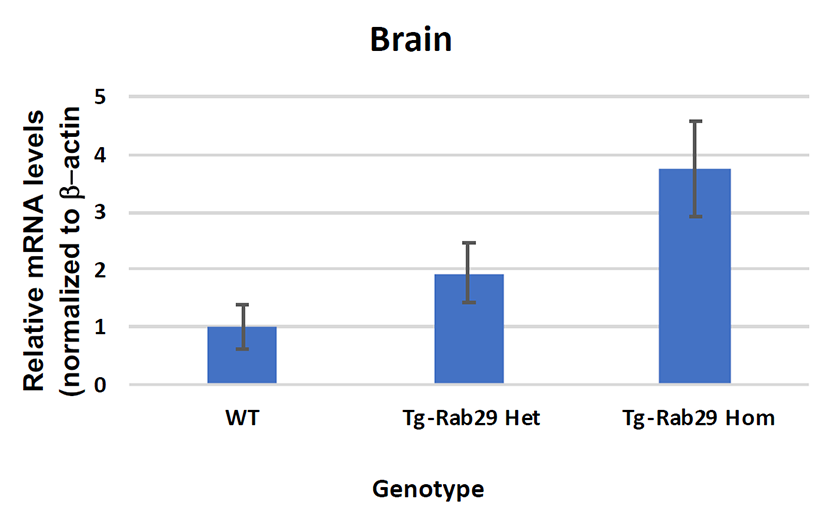
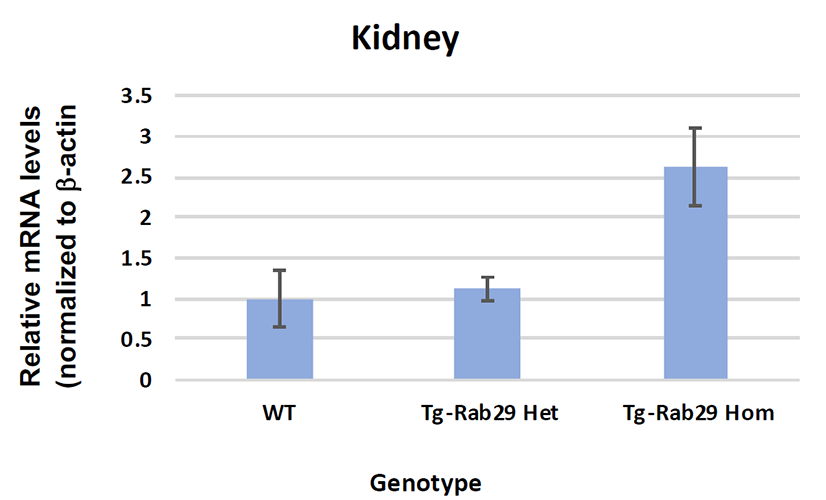
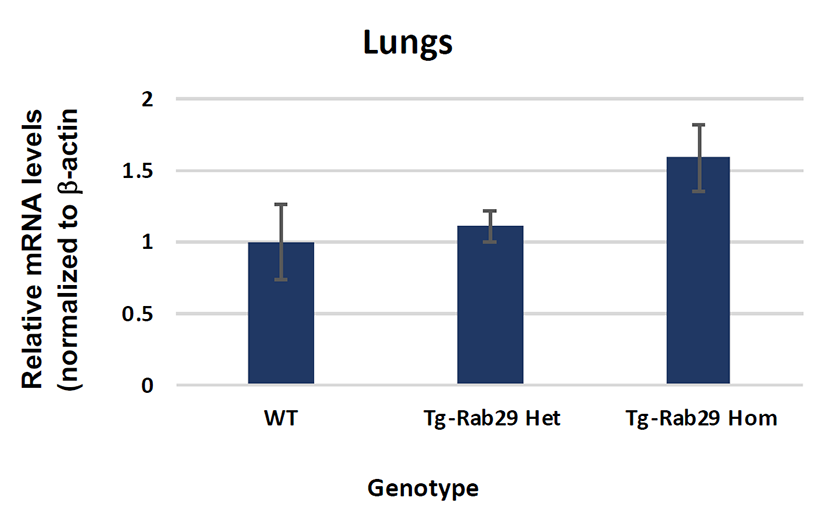
Four biological replicates per genotype and two technical replicates per reaction. Data courtesy of Dr. Dario Alessi.
Analysis of Rab29 protein levels in Rab29 Overexpression Mouse
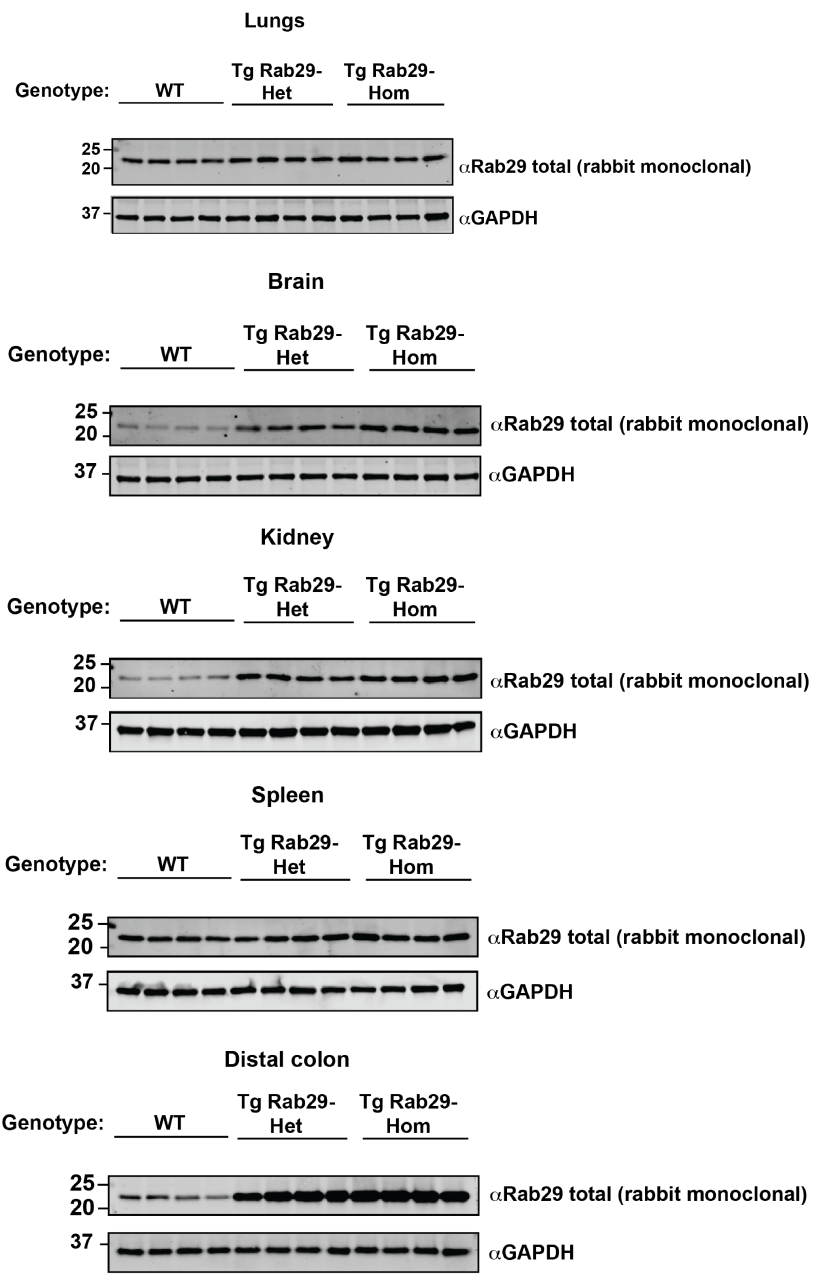
Data courtesy of Dr. Dario Alessi.
- Licensing
- Pricing - USD
- Pricing - EUR
- Pricing - DKK
- Select my Health Standard
- Get Custom Pricing Guide
Licensing
The Rab29 Overexpression Mouse ("Model") is produced and distributed under rights to patents and/or intellectual property owned by or licensed to the Michael J. Fox Foundation ("MJFF") and Taconic. Taconic has rights to breed and distribute the Model. MJFF permits the sale of such Model to each purchaser that agrees to the Terms and Conditions of the Sale and following terms of use:
- Title to the Model, any progeny and biological materials derived from the foregoing remains with MJFF.
- The Model may be bred or crossbred by purchaser or by Taconic for purchaser.
- Purchaser shall inform MJFF of any crossbred animal generated ("Modified Progeny"), shall at MJFF's election deposit breeding pairs of each Modified Progeny with Taconic or another designee of MJFF and shall permit Taconic or another designee of MJFF to distribute the Modified Progeny on behalf of MJFF to non-profit institutions or for-profit institutions without any compensation to purchaser on terms similar to the terms and conditions by which purchaser received the Model. Purchaser assumes all liability for any claim or demand that Modified Progeny created by purchaser infringes on the intellectual property rights of any third party.
- The Model and progeny may be used by non-profit institutions or for-profit institutions for research purposes only.
- The Model, progeny or biological materials will not be used for commercial purposes.
- The Model, progeny, and biological materials derived from them will not be distributed to any third party.
- Purchaser assumes all risk from using the Model, progeny and biological materials.
- To the extent permissible by law, purchaser indemnifies, defends, and holds harmless MJFF from any claim or demand that purchaser's use or transfer of the Model, progeny, or biological materials has caused harm, damage or liability.
Pricing - USD
16552-CryoCohort-4
| Item | Commercial | Nonprofit |
|---|---|---|
| Cryopreserved Model | US$5,000.00 | US$5,000.00 |
Cryopreserved models are invoiced upon shipment of recovered animals. Once orders are placed, the full purchase price will be applied if the order is canceled. For orders greater than 4 animals, please contact Taconic for options.
Fees for Taconic Transit Cages™ and freight are in addition to the price above.
Pricing - EUR
16552-CryoCohort-4
| Item | Commercial | Nonprofit |
|---|---|---|
| Cryopreserved Model | 4.550,00 € | 4.550,00 € |
Cryopreserved models are invoiced upon shipment of recovered animals. Once orders are placed, the full purchase price will be applied if the order is canceled. For orders greater than 4 animals, please contact Taconic for options.
Fees for Taconic Transit Cages™ and freight are in addition to the price above.
Pricing - DKK
16552-CryoCohort-4
| Item | Commercial | Nonprofit |
|---|---|---|
| Cryopreserved Model | kr.33.943,00 | kr.33.943,00 |
Cryopreserved models are invoiced upon shipment of recovered animals. Once orders are placed, the full purchase price will be applied if the order is canceled. For orders greater than 4 animals, please contact Taconic for options.
Fees for Taconic Transit Cages™ and freight are in addition to the price above.
Select my Health Standard
Need help choosing the right Taconic Biosciences health standard for your research?
Use the Health Standard Selector to enter your exclusion list. The tool will tell you which health standards meet your requirements.
Get custom pricing guide
Schedule A Scientific Consultation
Connect directly with a member of our Scientific Solutions team who can help you select the most appropriate model and maximize your experimental success.
















.jpg)

.jpg)
.jpg)
.jpg)
.jpg)





.jpg)


.jpg)
.jpg)




.jpg)




.jpg)

.jpg)




